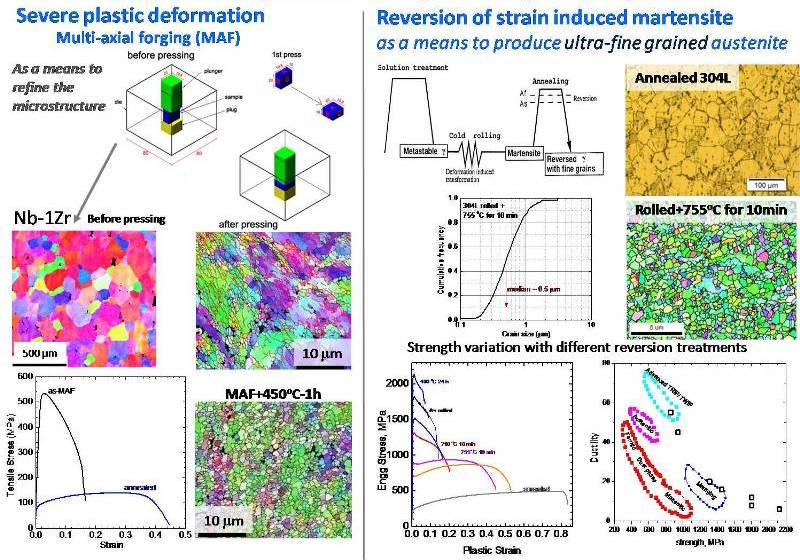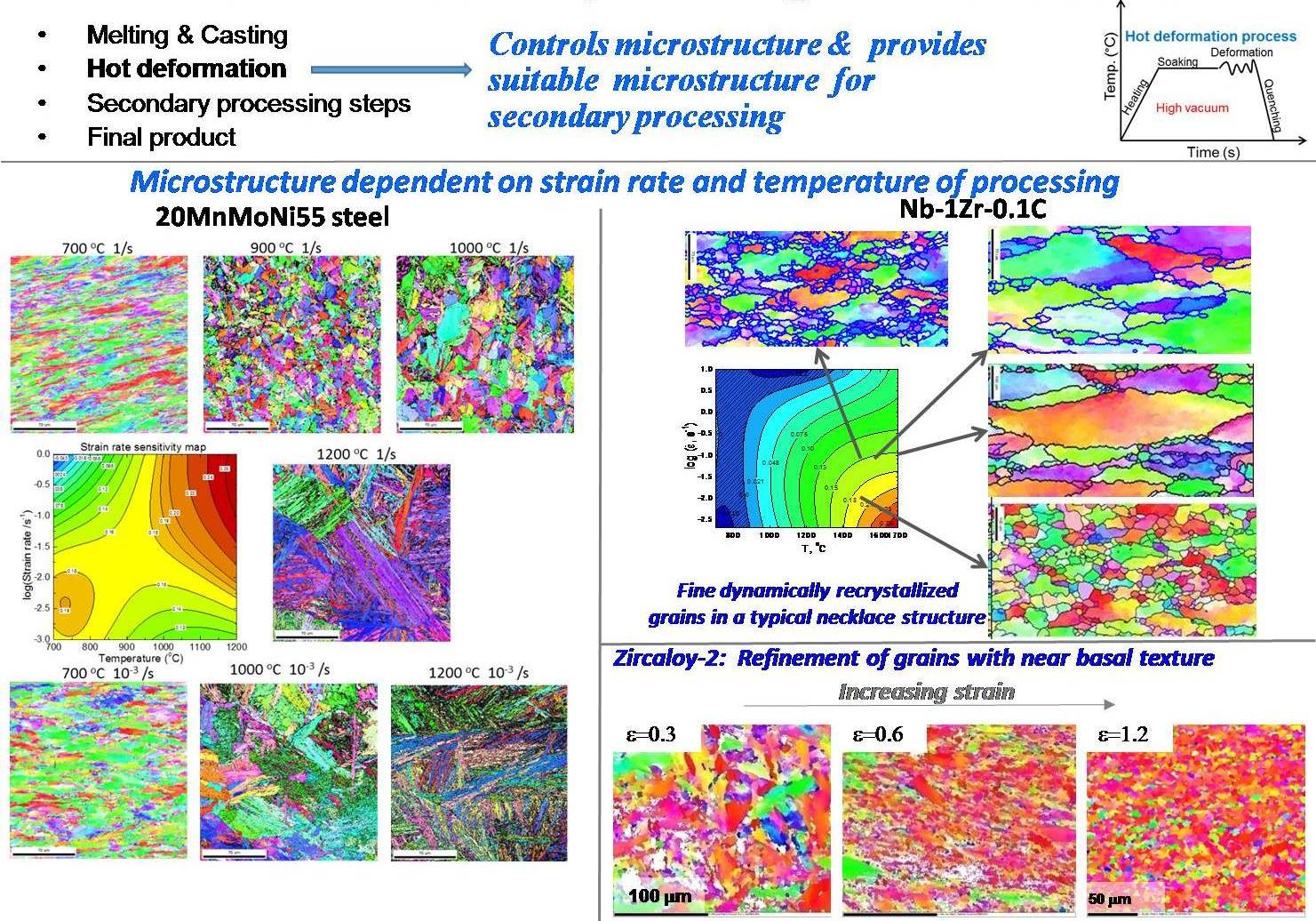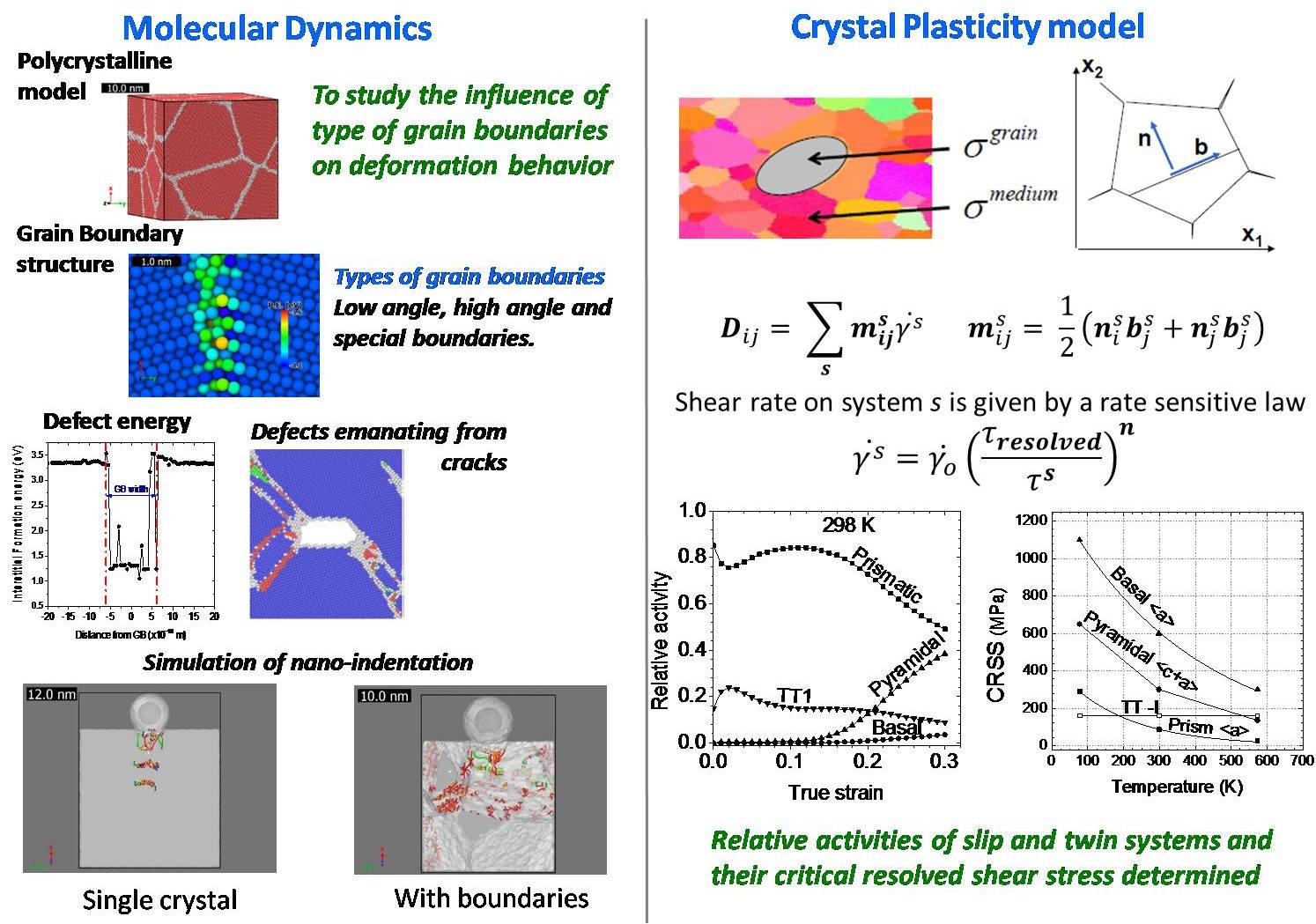

To perform basic and directed R & D work on structural materials used in nuclear and allied plants, its in-service degradation and technology development of national importance using both state-of-the-art experimental and computational approaches so as to optimise the manufacturing process, generate mechanical property database for safety assessment and understanding of the degradation mechanisms for life extension.
The precipitation of hydrides normal to the transverse direction in Zr-2.5%Nb pressure tube alloy when cooled under stress above a threshold value, is known as stress reorientation of hydrides. The ex-situ threshold stress values reported in the literature were determined using pre-charged samples heated to a peak temperature to dissolve all the hydrides, cooled to reorientation temperature followed by cooling under stress from reorientation temperature. Leger and Donner performed in-situ reorientation experi- ments using samples having hydride deposited on its surface. In both cases, hydride reorientation oc- curred during cooling. In the present investigation, for the first time, experiments were done to study the reorientation phenomenon using in-situ gaseous charging of samples under stress at a constant tem- perature using a specially designed set up. It is expected that the threshold stress determined by in-situ method used in the present investigation will more closely resemble the formation of radial hydrides under reactor operating conditions. In this work, the threshold stress values for reorientation of hydrides in Zr-2.5%Nb pressure tube material were determined using both in-situ and ex-situ methods.

 1/2019
1/2019Different techniques of severe plastic deformation (SPD) are being used to generate high strength alloys. Equal Channel Angular Pressing (ECAP) and Multi-Axial Forging (MAF) have been carried out on Al-alloys, Nb-alloy, Ta-alloys etc. Microstructure and mechanical properties of the processed materials have been investigated in detail. Recently, high strength SS304 has been developed using a novel processing technique involving reverse austenite transformation.

 1/2019
1/2019Hot working is carried out for industrial processing of engineering components. Optimum hot working conditions of various structural materials - (Zirconium alloys, Reactor Pressure Vessel steels, Titanium alloys, Refractory alloys etc.) used in the Nuclear industry have been determined from laboratory scale study. Uniaxial hot compression tests are carried out in a wide range of strain rates and temperature. Flow stress data are utilized to generate the processing map. Optimum hot working condition is identified from the processing map.

 1/2019
1/2019Different length scale simulations have been carried out to understand deformation micro-mechanism in various materials. In a study, Molecular Dynamics simulation was performed to investigate the interaction of nano-scale cracks with grain boundaries in Fe. Different types of symmetric tilt grain boundaries were considered. This study revealed that the sigma3 grain boundaries have higher tensile strength than other GBs.
\r\nIn another study, twinning behavior of Zircaloy has been simulated using visco plastic self consistent crystal plasticity simulation.
The stress fields of expanding (precipitation) and contracting (dissolution) hydride plates were computed by finite element method using Zr–H solid solution and hydride properties at 25, 200 and 400 °C for fully and semi-constrained hydride plates. For the first time simultaneous hydride expansion and matrix contraction and vice-versa have been considered in a simulation of hydride precipitation and dissolution, respectively. It was observed that a fully constrained expanding hydride plate exerts a tensile stress field in the matrix close to the edge of the hydride plate while a partially contracting hydride plate exerts a tensile stress field in the hydride plate as well as a large compressive stress in the surrounding matrix close to the edge of the hydride plate. It is suggested that a compressive stress component in the matrix acting normal to a partially shrinking hydride plate could possibly explain an enhanced resistance to hydride embrittlement of Zr-alloy at elevated temperature.